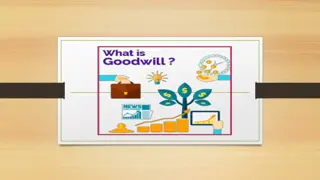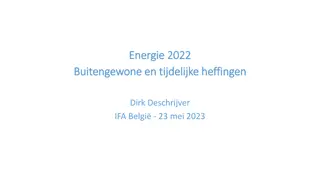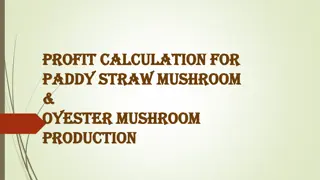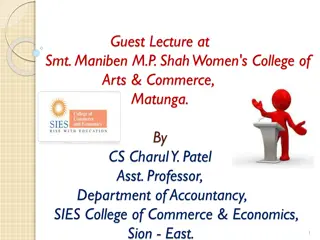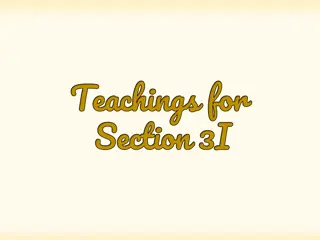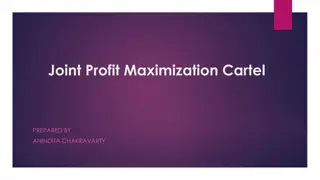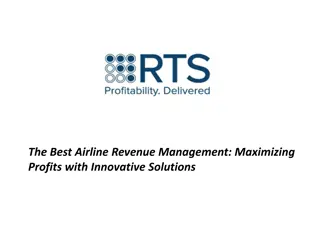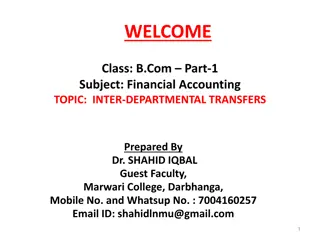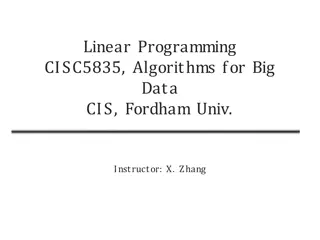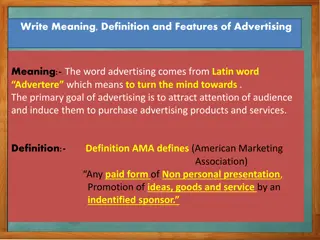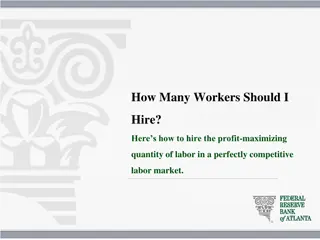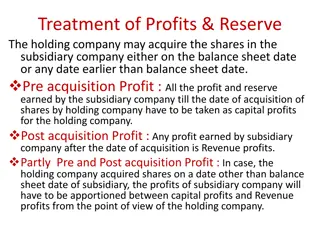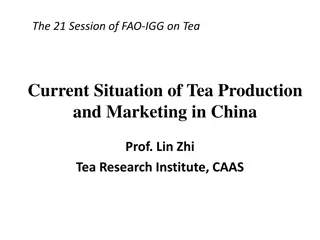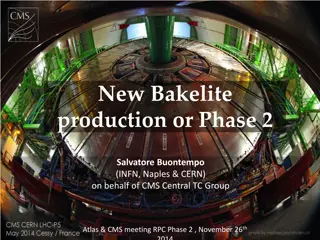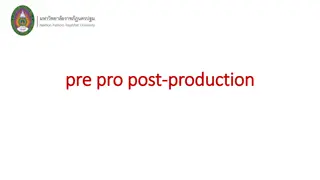Maximizing Profits in Production Scenarios
Explore two production scenarios to maximize profits using optimization models. The first scenario involves a cookie store with constraints on cookie production and labor hours. The second scenario features a computer factory maximizing profit considering production line and labor constraints. Learn how to formulate objective functions and constraints to achieve optimal profit outcomes.
Download Presentation

Please find below an Image/Link to download the presentation.
The content on the website is provided AS IS for your information and personal use only. It may not be sold, licensed, or shared on other websites without obtaining consent from the author. Download presentation by click this link. If you encounter any issues during the download, it is possible that the publisher has removed the file from their server.
E N D
Presentation Transcript
LINGO TUTORIAL 2 LINGO TUTORIAL 2
EXAMPLE : A cookie store can produce drop cookies and decorated cookies , which sell for $1 and $3 apiece ,respectively. The two bakers each work 8 hours per day and can produce up to 400 drop cookies and 200 decorated cookies. It takes 1 minute to produce each drop cookie and 3 minutes to produce each decorated cookie. What combination of cookies produced will maximize the baker's profit?
SOLUTION: Model: ! variables X1 : The number of drop cookies X2 : The number of decorated cookies Objective function; MAX = 1*X1 + 3*X2; ! S.t.; X1 <= 400; X2 <= 200; 1/60*X1 + 3/60*X2 <=16;
Example 2 Let's imagine that the Computer factory produces two models of computers - Standard and Turbo. Factory can sell every Standard unit it produces for a profit contribution of $100, and each Turbo unit for a contribution of $150. At the factory, the Standard computer production line can produce, at most, 100 computers per day. At the same time, the Turbo computer production line can turn out 120 computers per day. Furthermore, the company has a limited supply of daily labor. In particular, there is a total of 160 hours of labor available each day. Standard computers require 1 hour of labor, while Turbo computers are relatively more labor intense requiring 2 hours of labor.
The company want to maximize total profit without exceeding line and labor capacity limits. We will let the variables X1 : Denote the number of Standard computers produce. X2 : Denote the number of Turbo computers to produce. Total profit is calculated as the sum of the profit contribution of the Standard computer ($100) multiplied by the total Standard computers produced (X1) and the profit contribution of the Turbo computer ($150) multiplied by the total Turbo computers produced (X2). Finally, we tell LINGO we want to maximize an objective function by preceding it with "MAX =".
Therefore, our objective function is written on the first line of our model window as: MAX = 100 * X1 + 150 * X2; The number of Standard and Turbo computers produced must be constrained to the production line limits of 100 and 120, respectively. X1 <= 100; X2 <= 120; The final constraint on the amount of labor used can be expressed as: X1+ 2 * X2 <= 160; After entering the above and entering comments to improve the readability of the model, your model window should look like the following:
1. File Menu Commands: New Opens a new model window. Open Opens an existing model previously saved to disk. Save Saves the contents of the current window to disk. Save As Saves the contents of the current window to a new name. Close Closes the current window. Print Prints the contents of the current window. Print Setup Configures your printer. Print Preview Displays the contents of the current window as it would appear if printed Log Output Opens a log file for logging output to the command window. Take Commands Runs a command script contained in a file. Export File Exports a model in MPS or MPI file format. License Prompts you for a new license password to upgrade your system. Database User Info Prompts you for a user id and password for database access via the @ODBC() function. Exit Exits LINGO.
2. Edit Menu Commands: Undoes the last change. Undo Redo Redoes the last undo command. Cut Cuts the current selection from the document. Copy Copies the current selection to the clipboard. Paste Pastes the contents of the clipboard into the document. Paste Special Pastes the contents of the clipboard into the document, allowing choice as to how the object is pasted. Select All Selects the entire contents of the current window. Find Searches the document for the occurrence of a specified text string. Find Next Repeats the find operation for the last string specified. Replace Replaces a specified text string with a new string. Go To Line Moves the cursor to a specified line number. Match Parenthesis Finds the parenthesis that closes a selected parenthesis. Paste Function Pastes a template of a selected LINGO @function. Select Font Specifies a font for a selected block of text. Insert New Object Embeds an OLE (Object Linking and Embedding) object into the document. Links Controls the links to external objects in your document. Object Properties Specifies the properties of a selected, embedded object.
3. LINGO Menu Commands: Solve Solves the model in the current window. Solution Generates a solution report window for the current model. Range Generates a range analysis report for the current window. Options Sets system options. Generate Generates the algebraic representation for the current model. Picture Displays a graphical picture of a model in matrix form. Debug Tracks down formulation errors in infeasible and unbounded linear programs. Model Statistics Displays a brief report regarding the technical detail of a model. Look Generates a formulation report for the current window.


